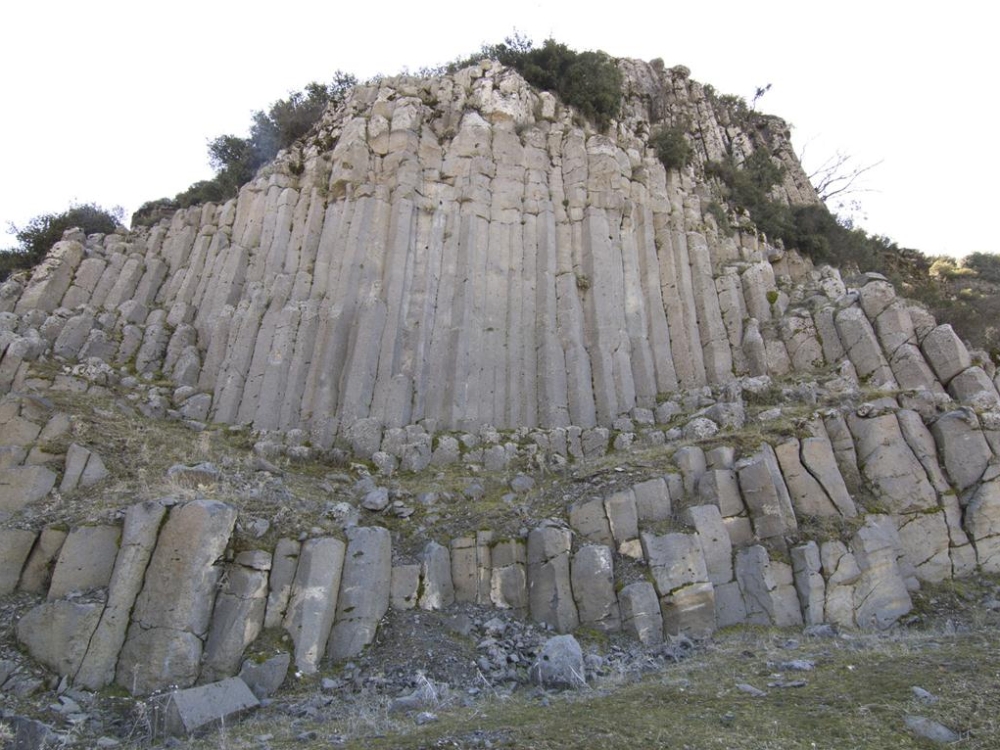Çakırca Basalt Columns

Çakırca basalt columns were formed as a result of the lava released by the Toytepe Volcano, located at the northernmost end of the Sarnıç Plateau, which became active approximately 1,260 million years ago, spreading around and creating a very thick lava cover in certain areas. The lava cover in question begins to cool rapidly along the lower surface where it spreads and the upper surface in contact with the outer atmosphere. The cooling that begins on the upper and lower surfaces of the lava cover continues deeper into the lava mass over time. Meanwhile, the cooling that occurs in the lava cover causes tension, contraction and shrinkage in the lava cover due to volume contraction. This initially occurs as hexagonal crack systems develop on lava flows, and over time, these cracks extend deeper. As a result, interlocking hexagonal basalt columns are formed. Contractions and shrinkages due to cooling started in the central part of the lava mass and spread evenly towards the periphery, resulting in the formation of hexagonal columns. The column structure in question can be seen in many volcanic rocks. However, characteristic column structures are often seen on basalts. Scientific studies have revealed that hexagonal basalt columns generally develop in lava flows of the same thickness or the same geochemical composition.







